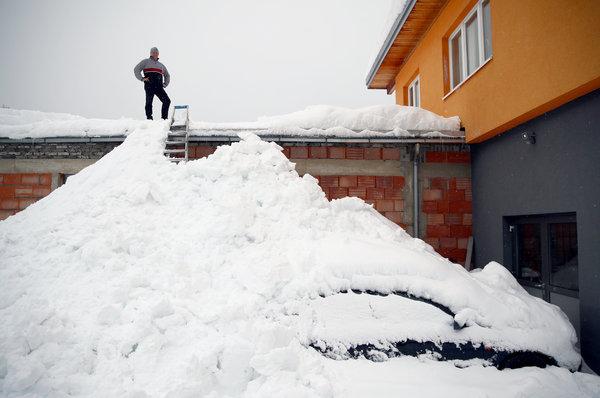BERLIN — Once-in-a-generation heavy snowfall has paralyzed travel and tourism in parts of the Alps, with conditions that have left at least six people dead, Austrian officials said on Thursday.
Heavy snowfall and strong winds are projected to continue in Austria and southern parts of Germany until at least Friday, bringing at least an additional 20 inches, or 50 centimeters, of snow over 24 hours to parts of the Alps that have already seen as much as 10 feet over the past week.

Heavy snowfall and strong winds are projected to continue until at least Friday.CreditLisi Niesner/Reuters
Several regions have declared states of emergency as some roads, railways and ski resorts remain closed. Hundreds of tourists and residents are cut off in Austria because of unusually high avalanche risks.
The weather has been so severe that helicopters that would usually be used for controlled avalanches are grounded. A break in the weather on Friday could allow for avalanche crews to clear some roads.
Austrian train workers shut down the tracks to free a trapped chamois, a type of goat-antelope, on Wednesday. Deadly snowfall has paralyzed travel and tourism in parts of the Alps.Published OnCreditCreditOebb/Gottsbacher, via Associated Press
North of the Austrian border, in the German state of Bavaria, many schools have closed and rail service on many lines has been canceled. Avalanche warnings are active in most Alpine areas of the state, and the town of Miesbach declared a state of emergency on Monday.
In the municipality of Jachenau, the fire brigade is keeping the local grocery store stocked since commercial trucks are unable to reach the area, according to Oliver Platzer, a spokesman of the Bavarian ministry of interior.
Davos, Switzerland, where many world and business leaders are to gather for the annual meeting of the World Economic Forum at the end of the month, has reported nearly 25 inches of snow.
While the amount of snow that has fallen in the past weeks varies widely from area to area, it is unusual for so much snow to fall over such an extended period of time, according to Thomas Wostal, a spokesman at Austria’s Central Meteorological Office.
“In terms of amount of snow over 10 days, statistically this only happens every 30 to 100 years, depending on the region,” he said.
Hohentauern, a village in the central part of the country, has been cut off since Saturday. Roughly 270 visitors, including about 60 children, are waiting for one of the two passes leading from the village to open again.
“The village is safe and we’re keeping the streets clear,” said Franz Haas, owner of a hotel in Hohentauern. “The children are enjoying outdoor walks, tobogganing and the building of snowmen.”
Because fewer tourists than usual are staying in the village, and because there are farms nearby, there is no shortage of food, Mr. Haas said, and there is enough gas to heat cabins and hotels for at least two more weeks.
“We did tell guests that they don’t necessarily have to heat their rooms to 28 degrees, though,” he said, referring to the equivalent of 82 degrees Fahrenheit.
On Thursday, a 16-year-old German-Austrian skier died after being caught in an avalanche in St. Anton am Arlberg, Austria. Rescuers tried to resuscitate the boy 20 minutes after the avalanche, but were unable to revive him, according to news reports.
On Wednesday, rail workers briefly stopped their train and interrupted their rail-clearing activities to free a chamois from feet of snow. A video shows the workers carefully digging out the animal, a cross between a goat and an antelope, with shovels. It then continued its way through the countryside, seemingly unimpressed.
Mr. Haas, the 63-year-old hotel owner, said the winter reminded him of those of the 1960s and ’70s.
“I wouldn’t give it too much importance, it just means the winter is finally really good again,” he said by telephone.






